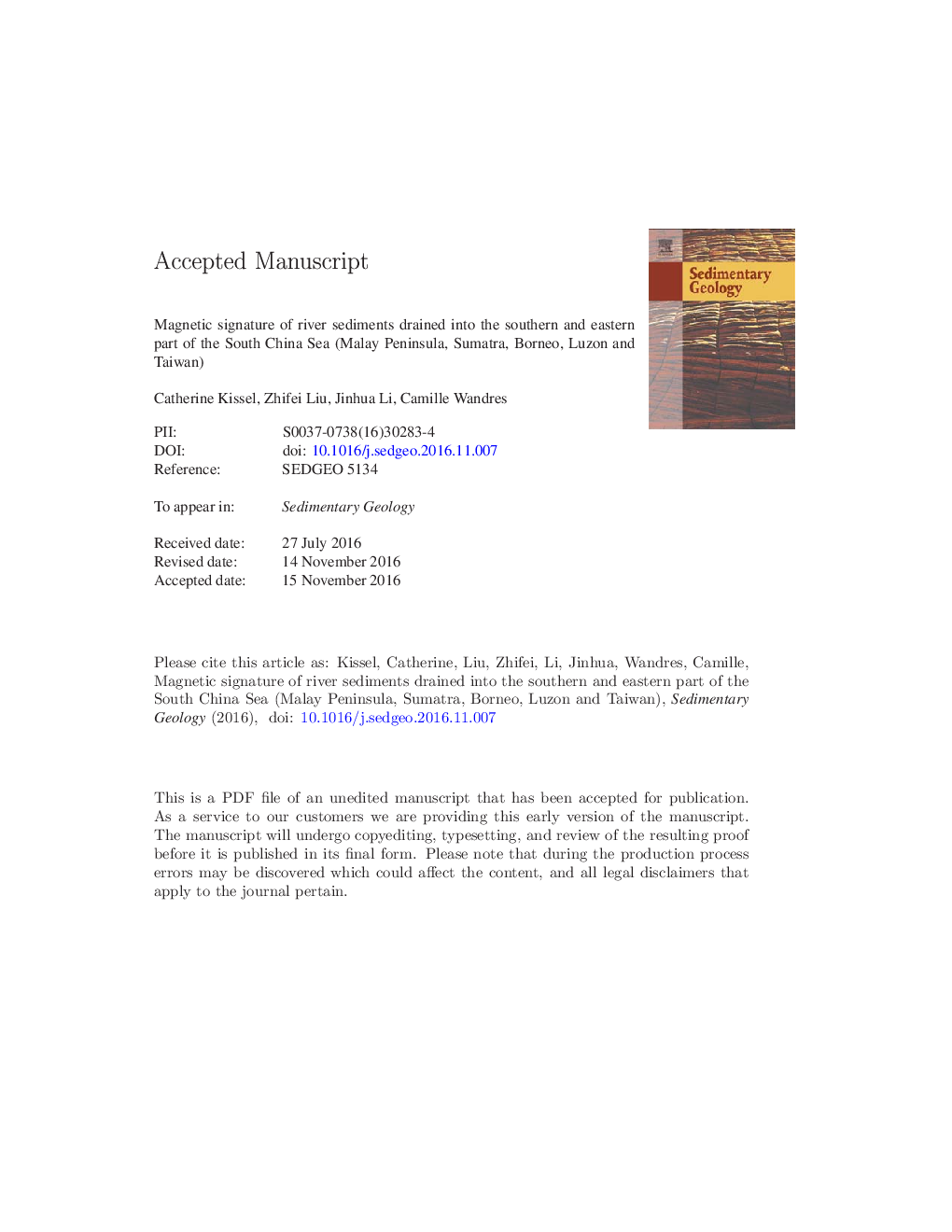| Article ID | Journal | Published Year | Pages | File Type |
|---|---|---|---|---|
| 5781324 | Sedimentary Geology | 2017 | 39 Pages |
Abstract
Magnetic properties of 22 river samples collected in the Malay Peninsula, Sumatra, Borneo, Luzon and Taiwan have been investigated in order to magnetically characterize the sediments drained and deposited into the South China Sea. The geological formations as well as the present climatic conditions are different from one region to another. Laboratory analyses include low-field magnetic susceptibility, anhysteretic (ARM) and isothermal (IRM) remanent magnetizations acquisition and decay, back-field acquisition, thermal demagnetization of three-axes IRM, hysteresis cycles and low-temperature magnetic measurements. The magnetic properties indicate that the sediments are a mixture of hematite, magnetite and pyrrhotite in different proportions depending on the region. Combined with results previously reported for the three main Asian rivers (Pearl, Red and Mekong rivers), the new data indicate that, in general, hematite-rich sediments are delivered to the southern basin of the South China Sea while the northern basin is fed with magnetite and pyrrhotite-rich sediments. In addition to this general picture, some variability is observed at smaller geographic scales. Indeed, the magnetic assemblages are closely related to the geology of the various catchments while clay minerals, previously reported for the same samples, are more representative of the climatic conditions under which the parent rocks have evolved within each catchment. The magnetic fraction, now well characterized in the main river sediments drained into the South China Sea, can be used as a tracer for changes in precipitation on land and in oceanic water mass transport and exchange.
Related Topics
Physical Sciences and Engineering
Earth and Planetary Sciences
Earth-Surface Processes
Authors
Catherine Kissel, Zhifei Liu, Jinhua Li, Camille Wandres,
